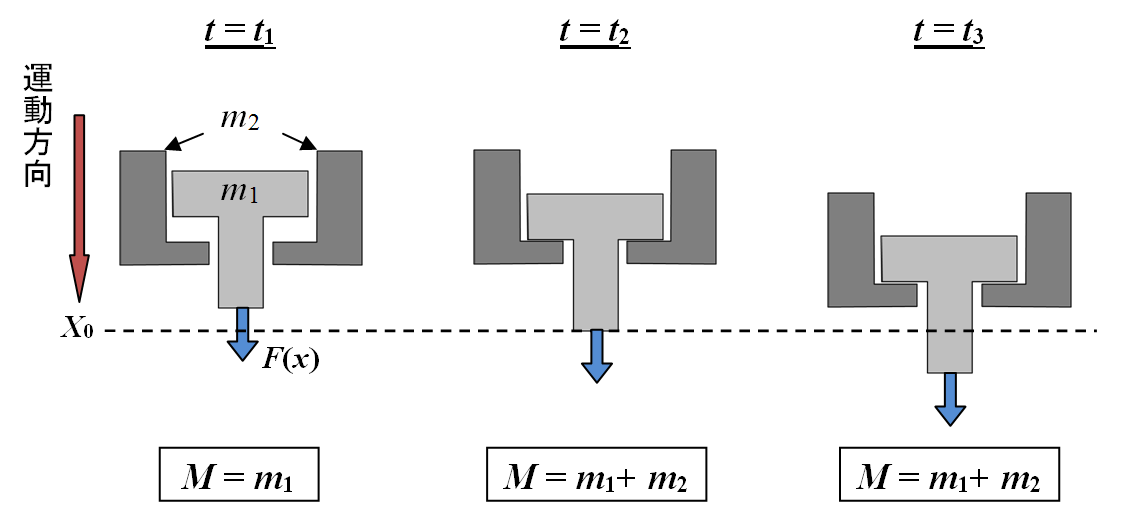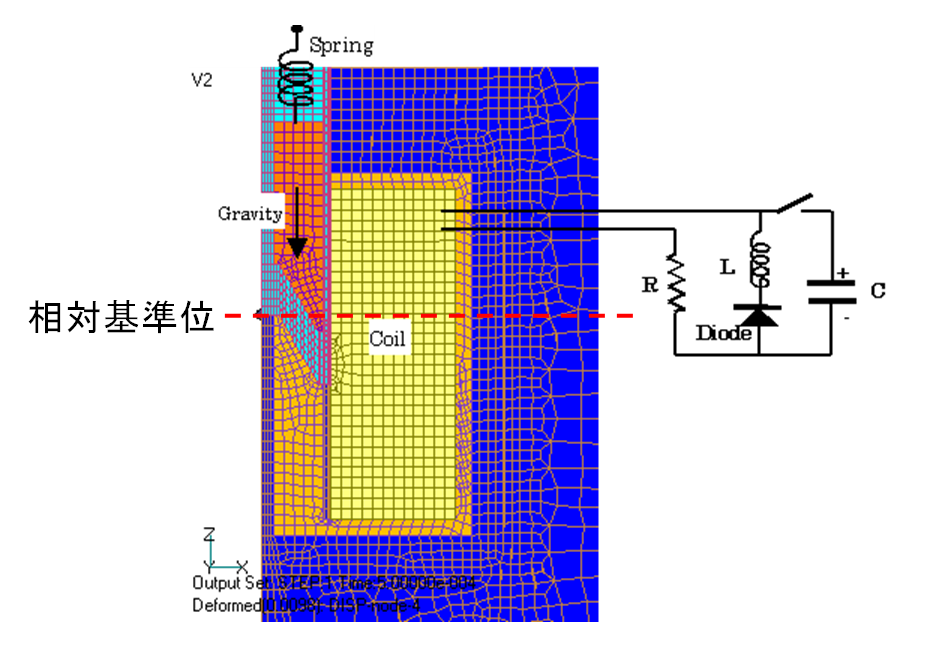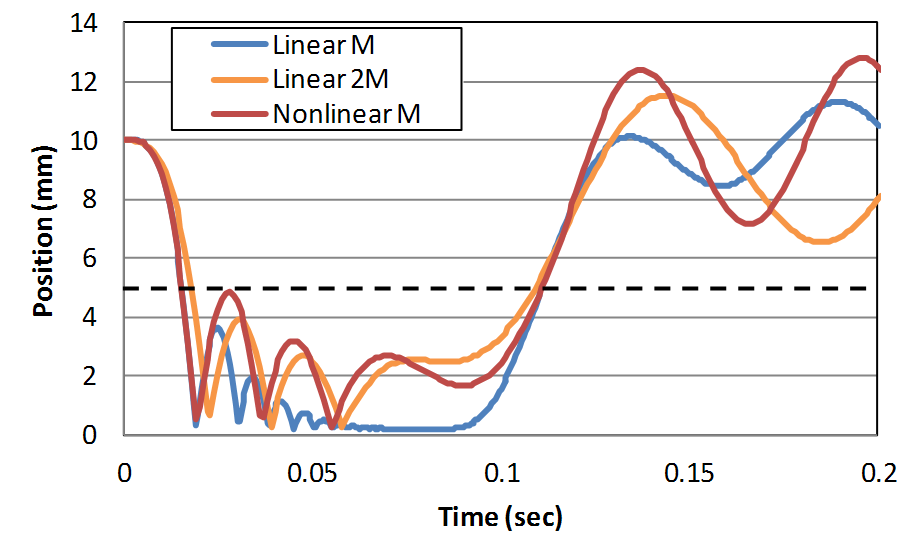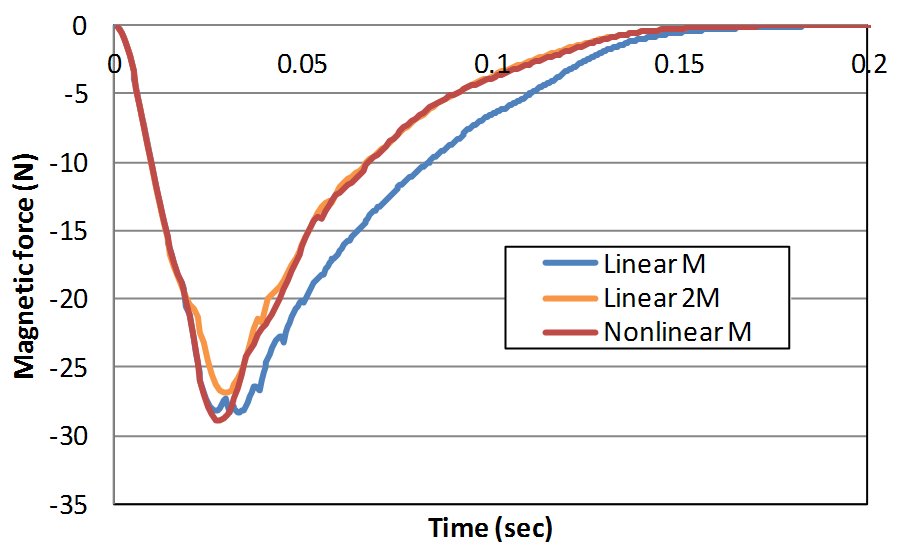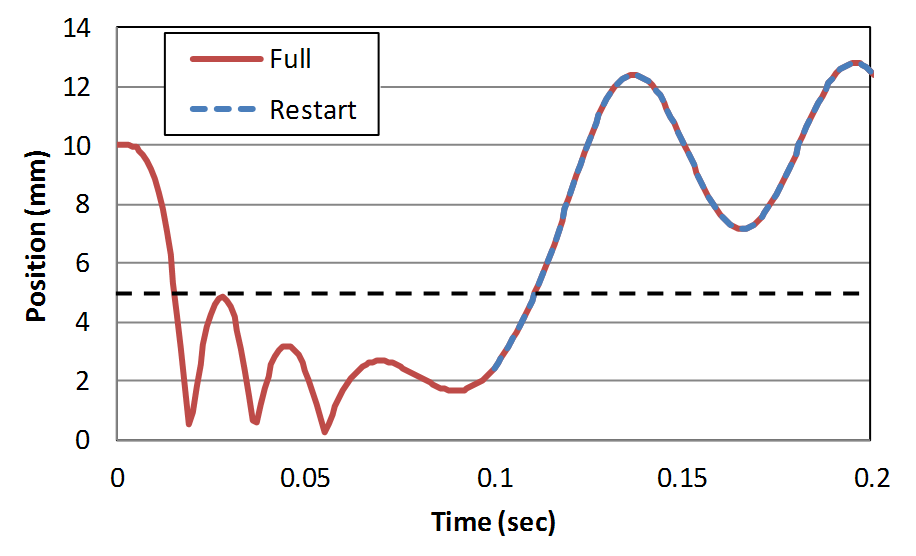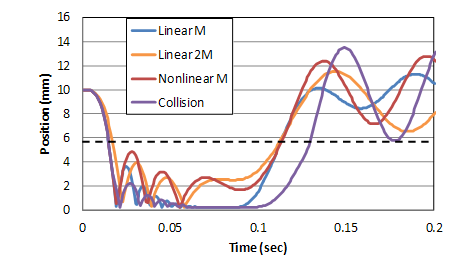New functionality added to Dynamic module - Relative position dependence of mass and restart function -
- TOP >
- Analysis Examples by Functions (List) >
- New functionality added to Dynamic module – Relative position dependence of mass and restart function –
Summary
EMSolution uses a method that requires two mesh data (pre_geom, deform_mesh) to interpolate the nodal positions of the deformed air region during the deformation motion."Plunger motion analysis" and "Three-dimensional analysis of plunger-type electromagnets and hinged electromagnetic relays with deformation" The coupled analysis function with the equations of motion (Dynamic module) is provided, as shown in Figure 2. This function solves the equations of motion shown in the following equation, where the external force F(x, v) is also given by mathematical input. In addition, the spring constants can be given as table data dependent on relative position to simulate nonlinear springs. We are pleased to report that the relative position dependence can now be taken into account for masses as well, using table data. In addition, restarting when using the dynamic module is now supported. In addition, the viscosity coefficient (a constant proportional to velocity) can be input as relative position-dependent or velocity-dependent table data to simulate a nonlinear damper.
Explanation
1. Nonlinear characteristics of mass with respect to relative position
This function can be used when the mass varies with position. For example, a mover (armature) may move in two stages as shown in Fig. 1. The armature is divided into $m_1$ and $m_2$, and below position $X_0$, the total mass of the armature changes from $M = m_1$ to $m_1 + m_2$.
Here, the relative position means the distance from the reference position in the mesh deformation motion analysis. As shown in Fig. 1, when two objects collide, the velocity changes to conserve momentum, and this velocity change can also be taken into account in the analysis. An example analysis is presented using the model of "Plunger motion analysis" shown in Fig. 2.
Let us assume that there is a mechanism as shown in Fig. 1 at the root of the mover (outside the model domain) as a pseudo-motion, and analyze it as if the mass $M$ = 0.09 kg doubles when the relative position falls below 5 mm. This is a motion and external circuit coupled transient magnetic field analysis considering eddy currents and nonlinear magnetic properties.
Fig. 3 shows the time variation graph of the relative position, Fig. 4 shows the velocity graph, and Fig. 5 shows the electromagnetic force graph. There are 4 cases of analysis: 1) with constant mass M (Linear M), 2) with constant mass 2M (Linear 2M), 3) with relative position dependence of mass with no velocity change due to collision (Nonlinear M), and 4) with velocity change considered and momentum conservation (Collision). The reference position for the relative position is set at the origin at the tip of the yoke core opposite the armature (the position where the armature and yoke core make contact), and the initial position is 12 mm above the origin. As a result, the motion of Nonlinear M is different from the results of M and 2M because the mass changes at a relative position of 5 mm, but the velocity changes continuously, whereas in Collision, the velocity changes at the time of collision, indicating that the motion is different from Nonlinear M.
2. Restart function
Next, the restart function is described. To perform a restart calculation, rename the solutions file to the old_solutions file and the motion file to the old_motion file, as in the normal case. The motion file contains the relative position (POSITION), velocity (VELOCITY), and electromagnetic force (MAG_FORCE) at each time point in text format. The restart input settings are the same as in the normal case. Fig. 6 shows a time variation graph of the relative position analyzed by restarting from 0.1 second in the previous Nonlinear M calculation, together with the original analysis results. It can be seen that they are in agreement.
The relative position-dependent function of mass and the restart function are explained. We hope this will be helpful in your design.
The rest of this page is for members only.
Analysis Examples by Functions
Coupled equations of motion and external circuit systems
- Three-dimensional analysis of plunger-type electromagnets and hinged electromagnetic relays with deformation
- Reference position in mesh deformation motion analysis
- Improvement of deformation motion function
- Plunger motion analysis
- New functionality added to Dynamic module – Relative position dependence of mass and restart function –
©2020 Science Solutions International Laboratory, Inc.
All Rights reserved.


